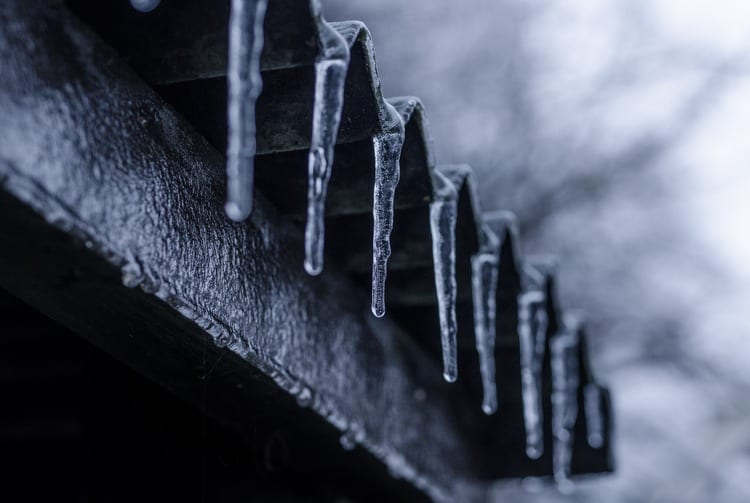Your house may look beautiful with icicles hanging along its eaves. But they can cause problems. Moreover, the conditions that encourage icicle growth also lead to ice dams, thick ridges of solid ice forming at the eaves.
If water does not drain properly from the gutters, ice dams can form on the roof, but the problem can be prevented. It is essential to install water and gutter protection on your roofing system to ensure its longevity. Here are some solutions to maintain your gutter system during the winter.
First, keep the roof’s temperature the same as the eaves so you can permanently eliminate ice dams. Secondly, add ventilation and insulation to the underside of the roof and seal air leaks. Taking care of common trouble spots is the key to enjoying a dam-free winter and using less energy.
But first,
What Are Ice Dams on a Roof?

A roof ice dam occurs when melting snow runs down the eaves and gutters. During freezing, the water forms a ridge of ice along your gutters and roof. A barrier is created when more water freezes on your roof, building an ice dam.
As the ice dam builds, it might block your gutters and cause water to stagnate, creating an even larger ice dam and pools of water that can make their way into your roof and walls and cause significant damage.
Consequently, water leaks may develop, shingles may be damaged, and even the roof may collapse, causing a costly repair. Ice dams form on the roof as snow warms and cools. As night falls, the melted ice refreezes, and an ice dam forms over several days.
Ice Dam Prevention Products
Cold roofs aren’t always the best option. There is still a chance you will get ice dams during winters with heavy snowfalls. Ice dams can also form at the foot of roof valleys (the right-angle junction between two roofs) because windblown snow fills them.
Additionally, some sections of the roof may not maintain cold temperatures. Then you need to resort to secondary strategies and ice dam prevention products, including:
1. Ice Melt Socks
It is easy to make and use Ice Melt Socks. In most cases, hiring an electrician or a roofer is not necessary. A ladder (with a stabilizer bar to keep you safe) and some supplies will suffice.
To get started, you’ll need the following:
- Nylon Stockings
- Calcium Chloride ice melt in a bucket (bag)
- A pair of scissors
Put 2-3 pounds of ice melt in the stocking’s “leg” and tie the ends. It’s that simple. The next step is to install ice melt socks vertically on the roof, one end in the gutter, and the other end up the slope, spacing them 3 feet apart.
Socks create channels in the ice that allow water to run off your roof rather than building up along the eaves. You can also place the socks along the eaves to prevent ice buildup in gutters.
Clear Your Roof off Snow Using a Rake
Snow rakes and aluminum scrapers mounted on aluminum poles at a right angle provide the best solution for occasional heavy snowfalls. Pulling down the snow prevents it from melting and forming ice dams.
Even though it’s tedious, this solution is fairly effective, but it can’t be used for two-story homes. Avoid using a snow rake while standing on a ladder! In winter, the shingles become brittle and are more likely to break.
Snow rakes are commonly available at home centers and hardware stores. It’s best to get yours before the snow falls; demand increases after the first snowfall.
Install Heat Cables
Mount the high-power wires zigzag-style on the roof edge and connect them to an outdoor GFCI outlet. They’re ideal for ice dam-prone areas that can’t be stopped by any other method. It is essential to route meltwater away from the house. Otherwise, it will freeze along the roof edge and in the gutters.
To avoid clogging the downspout with ice, run a heat cable inside the downspout.
Contact Us for an Ice Dam Solution Today
Ice dams can lead to expensive problems if they are not removed in time. Chemical ice melt is the best method for removing existing ice dams. But consider hiring an ice dam removal Boston specialist equipped with a pressurized steamer if you aren’t comfortable spreading salt.
Insulating and ventilating your attic can help prevent ice dams long-term. Nevertheless, metal roofing, roof snow removal, and heated cables can also help prevent ice dams. Heavy snow accumulation can potentially cause any roof to collapse. Contact G. McNeill & Son roof snow removal services for your peace of mind during Boston, MA winter.

